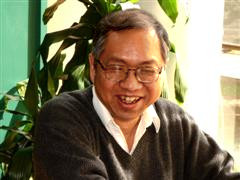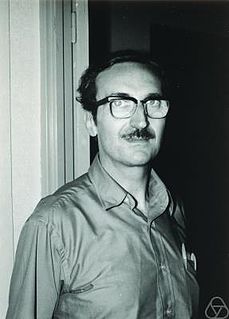Below are two alternative ways to express the problem:
Let the (n − 1) sphere be embedded as a minimal hypersurface in  (1). Is it necessarily an equator?
(1). Is it necessarily an equator?
By the Almgren–Calabi theorem, it's true when n = 3 (or n = 2 for the 1st formulation).
Wu-Chung Hsiang proved it for n ∈ {4, 5, 6, 7, 8, 10, 12, 14} (or n ∈ {3, 4, 5, 6, 7, 9, 11, 13}, respectively)
In 1987, Per Tomter proved it for all even n (or all odd n, respectively).
Thus, it only remains unknown for all odd n ≥ 9 (or all even n ≥ 8, respectively)
Is it true that an embedded, minimal hypersphere inside the Euclidean  -sphere is necessarily an equator?
-sphere is necessarily an equator?
Geometrically, the problem is analogous to the following problem:
Is the local topology at an isolated singular point of a minimal hypersurface necessarily different from that of a disc?
For example, the affirmative answer for spherical Bernstein problem when n = 3 is equivalent to the fact that the local topology at an isolated singular point of any minimal hypersurface in an arbitrary Riemannian 4-manifold must be different from that of a disc.

A sphere is a geometrical object in three-dimensional space that is the surface of a ball.

In mathematics, complex geometry is the study of complex manifolds, complex algebraic varieties, and functions of several complex variables. Application of transcendental methods to algebraic geometry falls in this category, together with more geometric aspects of complex analysis.

Shing-Tung Yau is an American mathematician and the William Caspar Graustein Professor of Mathematics at Harvard University.

In mathematics, Plateau's problem is to show the existence of a minimal surface with a given boundary, a problem raised by Joseph-Louis Lagrange in 1760. However, it is named after Joseph Plateau who experimented with soap films. The problem is considered part of the calculus of variations. The existence and regularity problems are part of geometric measure theory.
In mathematics, the Chern theorem states that the Euler-Poincaré characteristic of a closed even-dimensional Riemannian manifold is equal to the integral of a certain polynomial of its curvature form.
In geometry, a hypersurface is a generalization of the concepts of hyperplane, plane curve, and surface. A hypersurface is a manifold or an algebraic variety of dimension n − 1, which is embedded in an ambient space of dimension n, generally a Euclidean space, an affine space or a projective space. Hypersurfaces share, with surfaces in a three-dimensional space, the property of being defined by a single implicit equation, at least locally, and sometimes globally.

Eugenio Calabi is an Italian-born American mathematician and the Thomas A. Scott Professor of Mathematics, Emeritus, at the University of Pennsylvania, specializing in differential geometry, partial differential equations and their applications.
For any twice-differentiable real-valued function f defined on Euclidean space Rn, the Laplace operator takes f to the divergence of its gradient vector field, which is the sum of the n second derivatives of f with respect to each vector of an orthonormal basis for Rn. In the field of differential geometry, this operator is generalized to operate on functions defined on submanifolds in Euclidean space and, even more generally, on Riemannian and pseudo-Riemannian manifolds. This more general operator goes by the name Laplace–Beltrami operator, after Pierre-Simon Laplace and Eugenio Beltrami. Like the Laplacian, the Laplace–Beltrami operator is defined as the divergence of the gradient, and is a linear operator taking functions into functions. The operator can be extended to operate on tensors as the divergence of the covariant derivative. Alternatively, the operator can be generalized to operate on differential forms using the divergence and exterior derivative. The resulting operator is called the Laplace–de Rham operator.

Shiu-Yuen Cheng (鄭紹遠) is a Hong Kong mathematician. He is currently the Chair Professor of Mathematics at the Hong Kong University of Science and Technology. Cheng received his Ph.D. in 1974, under the supervision of Shiing-Shen Chern, from University of California at Berkeley. Cheng then spent some years as a post-doctoral fellow and assistant professor at Princeton University and the State University of New York at Stony Brook. Then he became a full professor at University of California at Los Angeles. Cheng chaired the Mathematics departments of both the Chinese University of Hong Kong and the Hong Kong University of Science and Technology in the 1990s. In 2004, he became the Dean of Science at HKUST. In 2012, he became a fellow of the American Mathematical Society.

Geometric analysis is a mathematical discipline where tools from differential equations, especially elliptic partial differential equations are used to establish new results in differential geometry and differential topology. The use of linear elliptic PDEs dates at least as far back as Hodge theory. More recently, it refers largely to the use of nonlinear partial differential equations to study geometric and topological properties of spaces, such as submanifolds of Euclidean space, Riemannian manifolds, and symplectic manifolds. This approach dates back to the work by Tibor Radó and Jesse Douglas on minimal surfaces, John Forbes Nash Jr. on isometric embeddings of Riemannian manifolds into Euclidean space, work by Louis Nirenberg on the Minkowski problem and the Weyl problem, and work by Aleksandr Danilovich Aleksandrov and Aleksei Pogorelov on convex hypersurfaces. In the 1980s fundamental contributions by Karen Uhlenbeck, Clifford Taubes, Shing-Tung Yau, Richard Schoen, and Richard Hamilton launched a particularly exciting and productive era of geometric analysis that continues to this day. A celebrated achievement was the solution to the Poincaré conjecture by Grigori Perelman, completing a program initiated and largely carried out by Richard Hamilton.
In mathematics, Hopf conjecture may refer to one of several conjectural statements from differential geometry and topology attributed to Heinz Hopf.
In the field of differential geometry in mathematics, mean curvature flow is an example of a geometric flow of hypersurfaces in a Riemannian manifold. Intuitively, a family of surfaces evolves under mean curvature flow if the normal component of the velocity of which a point on the surface moves is given by the mean curvature of the surface. For example, a round sphere evolves under mean curvature flow by shrinking inward uniformly. Except in special cases, the mean curvature flow develops singularities.
In the mathematical fields of differential geometry and geometric analysis, inverse mean curvature flow (IMCF) is a geometric flow of submanifolds of a Riemannian or pseudo-Riemannian manifold. It has been used to prove a certain case of the Riemannian Penrose inequality, which is of interest in general relativity.
The Geometry Festival is an annual mathematics conference held in the United States.

Robert "Bob" Osserman was an American mathematician who worked in geometry. He is specially remembered for his work on the theory of minimal surfaces.
In differential geometry, Bernstein's problem is as follows: if the graph of a function on Rn−1 is a minimal surface in Rn, does this imply that the function is linear? This is true in dimensions n at most 8, but false in dimensions n at least 9. The problem is named for Sergei Natanovich Bernstein who solved the case n = 3 in 1914.
In mathematics, the Almgren–Pitts min-max theory is an analogue of Morse theory for hypersurfaces.
In mathematics, Yau's conjecture on the first eigenvalue is, as of 2018, an unsolved conjecture proposed by Shing-Tung Yau in 1982. It asks:
Is it true that the first eigenvalue for the Laplace–Beltrami operator on an embedded minimal hypersurface of is ?
Chern's conjecture for hypersurfaces in spheres, unsolved as of 2018, is a conjecture proposed by Chern in the field of differential geometry. It originates from the Chern's unanswered question:
Consider closed minimal submanifolds immersed in the unit sphere with second fundamental form of constant length whose square is denoted by . Is the set of values for discrete? What is the infimum of these values of ?










